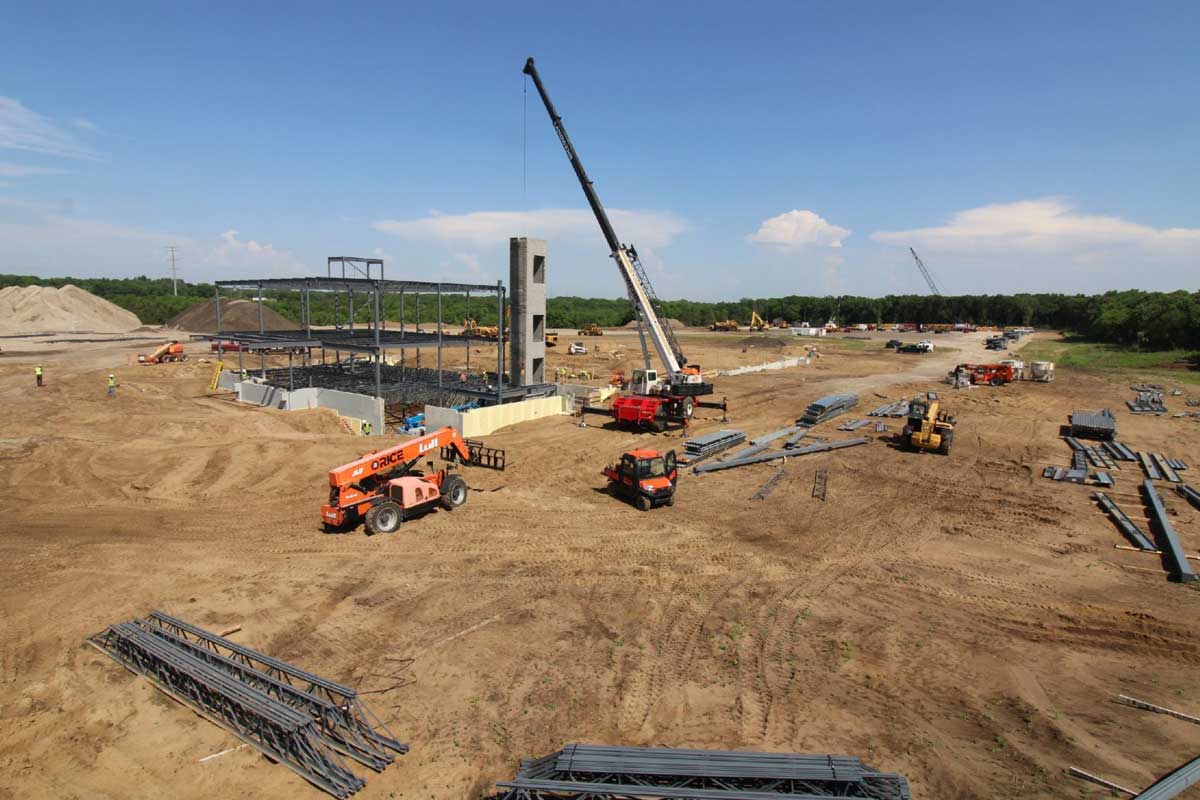When it comes to renting a crane for your next project, you want to be sure you’re picking the right crane for the job. While the difference between a crawler crane and a tower crane is fairly clear-cut, it can be harder to discern the right option when you’re deciding between more similar models of cranes.
Rough-terrain and all-terrain cranes, two types of cranes commonly used in construction, are very similar in their capabilities and functions, but there are a few key differences between them that can help you determine which is best for your project.
Rough Terrain Crane Features
Rough-terrain cranes, also called off-road cranes, are mounted on a four-wheeled undercarriage. Both the wheels and the base are wider to boost the crane’s stability, and the wheels are taller to increase ground clearance over rugged terrain.
Rough-terrain cranes come with a telescoping boom and outriggers to stabilize and support during lifts. They are lighter than all-terrain cranes due to two factors: rough-terrain cranes are operated and driven from the same, small cab, and they only have one engine which powers both the boom and the undercarriage.
Their four-wheel drive and power steering allow for easy maneuverability over the uneven ground of construction sites with unpacked soil, even within tighter spaces. However, rough-terrain cranes are unable to travel at speed on public roads, meaning they need to be transported to job sites.
All-Terrain Crane Features
All-terrain cranes come equipped with a longer boom, more tires—usually between six and ten—and two engines. That, combined with their wider cab, makes them much heavier than rough-terrain cranes, though they may still need the assistance of outriggers during lifts.
Like the rough-terrain crane, all-terrains are highly maneuverable over uneven ground, but they also provide the added benefit of being able to maintain higher speeds on public roads. In the crane industry, all-terrain cranes are often viewed as the ideal combination of a truck-mounted crane and a rough-terrain crane, as they offer mobility and transportability without sacrificing the ability to handle off-road conditions.
Choosing Between All-Terrain and Rough-Terrain
So, summed up simply:
- All-terrain cranes can travel public roads, while rough-terrain cranes need to be transported
- All-terrain cranes can typically reach higher heights
- Rough-terrain cranes are lighter, so they have a more limited lifting ability when compared to all-terrains
- Rough-terrain cranes can get by with less site preparation due to their off-road-focused design
Both types of cranes possess excellent maneuverability, even in snow, mud, and other challenging conditions. When making the choice between an all-terrain or rough-terrain crane, keep these factors in mind:
- Load weight
- Necessary boom height
- Terrain difficulty
- The cost of transporting a rough-terrain crane
Not sure which type of crane is best for your job? Making the correct choice is essential to keeping your project on track and within budget. For questions, call the experts at Landwehr Construction, and we’ll help you make the right call.

